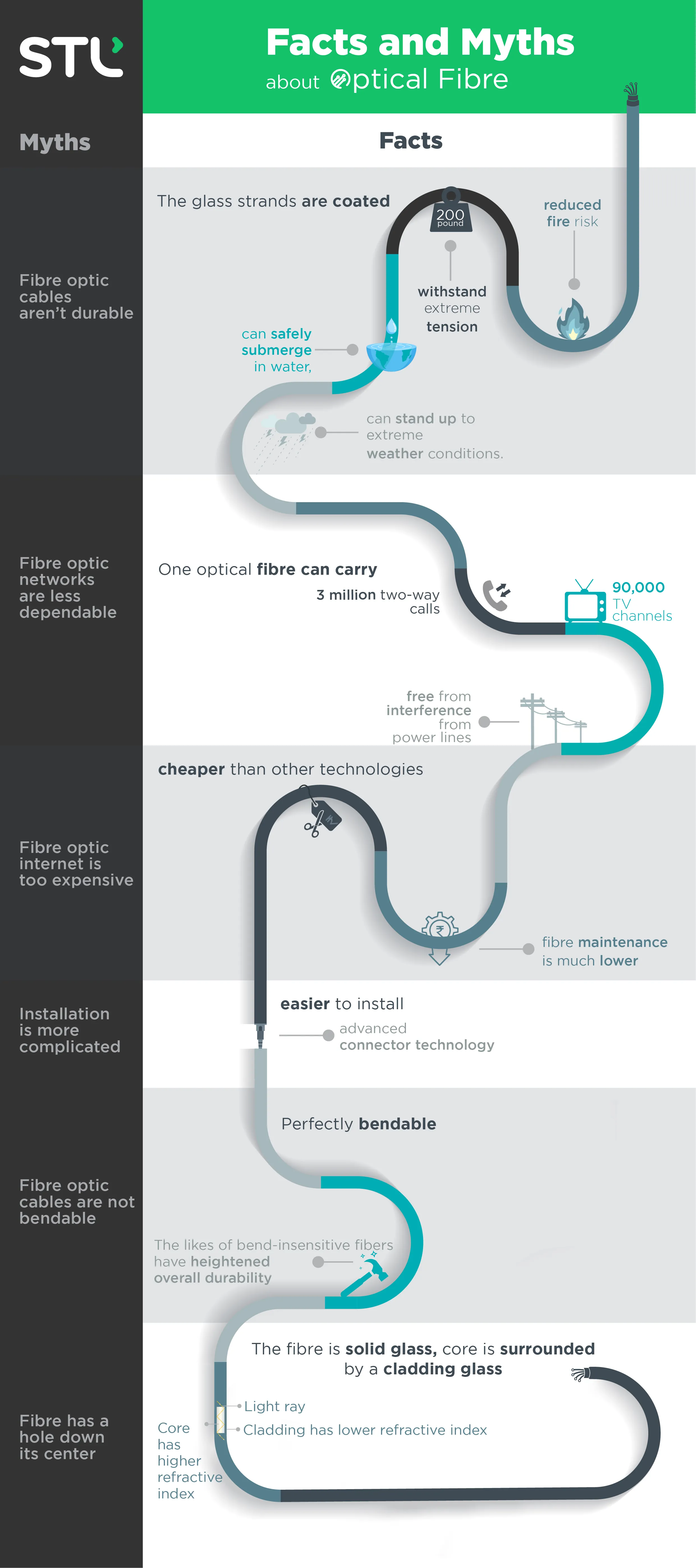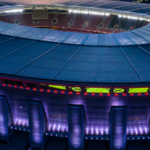As data-intensive applications like video streaming, online gaming, and cloud computing become more common, the need for increased bandwidth has grown, and the demand for high-speed internet has increased. Optical fibre provides faster internet speeds and greater bandwidth than traditional copper wires.
With optical fibre taking the network communication market by storm, myths have been built around it as not everyone fully understands its capabilities and functioning. This blog will dispel these myths with accurate information and education.
Contents
Myth 1: Fibre Optic cables are not durable
A common myth that surrounds optical fibres is that they are not durable. This is not entirely true. Modern fibre optic cables are designed to be quite resilient and can withstand a certain amount of stress without breaking.
In fact, the glass strands in the optical fibre are coated and can withstand extreme weather conditions and tension. At the same time, the cable is protected against fire and can even be submerged safely in water.
Myth 2: Fibre Optic cables are less dependable
Fibre optic cables are immune to electromagnetic interference because they use light pulses to transmit data instead of electrical signals. These light pulses are not affected by electromagnetic interference, such as radio frequency interference, which can disrupt electrical signals in copper cables.
The glass or plastic fibres in fibre optic cables are non-conductive and do not generate electromagnetic fields. They are also immune to external electromagnetic fields, or “crosstalk,” as they are confined within the fibre core and do not radiate outward.
This makes fibre optic cables more reliable in environments with many electromagnetic sources, such as near power lines or industrial equipment.
Myth 3: Fibre optic cables are too expensive
The cost of optical fibre cables has come down significantly in recent years. In addition, the long-term benefits of fibre optic cables, such as their greater speed and reliability and lower maintenance costs, can often outweigh their higher cost than traditional copper cables.
For example, the amount of data that needs to be transmitted can impact the cost of fibre optic cables. In some cases, a higher-capacity fibre optic cable may be needed to handle a large amount of transmitted data. This can make the cost of the cable go up, but it can also save money in the long run by getting rid of the need for multiple cables with lower capacities
Myth 4: Fibre optic cable installation is more complicated
While it is true that installing and maintaining optical fibre requires specialized skills and equipment, it is easier than installing and maintaining traditional copper wires. In fact, optical fibre can be easier to maintain in some cases because it is less susceptible to damage from environmental factors like moisture, temperature changes, and electromagnetic interference.
Also, with the development of advanced connector technology, fibre optic connector technology has advanced significantly in recent years, making it easier and faster to install and maintain fibre optic systems. The use of multi-fibre push-on (MPO) connectors, field-terminated connectors, fusion splicing, and small form-factor connectors has all made fibre installation easier and faster.
Myth 5: Fibre optic cables are not bendable
Fibre optic cables are bendable, to a certain extent, and are designed to be highly flexible and durable. The fibres inside the cable are typically coated with a silicone or acrylate protective layer, which helps prevent damage from bending or stress.
These cables are designed with a minimum bend radius—the minimum radius at which the cable can be bent without causing damage to the fibres. Most of the time, this radius can be anywhere from 10 to 30 times the diameter of the cable.
Myth 6: Fibre has a hole down its centre.
The idea that optical fiber has a hole in its center is a common myth. Optical fiber consists of a very thin strand, or “core,” of transparent material, such as plastic or glass, surrounded by a layer of cladding material with a lower refractive index. This layer is typically surrounded by a protective coating or buffer layer.
The light used for communication or transmission through optical fiber travels through the fiber’s core, not through a hole in the center.
Summing Up
STL offers innovative optical fibre cables for access, backhaul, and last-mile connectivity. STL’s Opticonn solution provides a bend-insensitive range of optical fibres, glass preforms, optical cables, and customizable, plug-and-play FTTx solutions. Get high-performance optical fibre cables with improved signal strength and a longer network lifetime.
Extended Network Lifetime
Innovative Optical Fibre Cables for Access, Backhaul and Last Mile Netw














